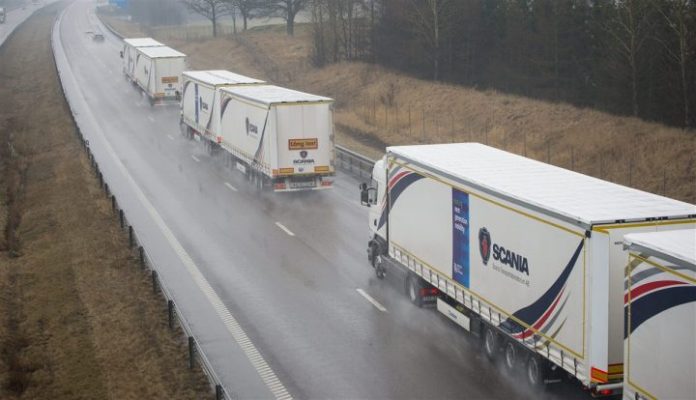The platooning trial included two trucks and was carried out in Quebec
FPInnovations’ transportation division, PIT Group, along with Transport Canada, Auburn University and Minimax Express Transportation recently collaborated to perform what it claimed to be Canada’s truck platooning trial. The platooning tests took place between October 29 and November 2 on highways around Montreal, La Tuque, Trois-Rivières and Blainville, in Quebec.
The platoon consisted of two heavy duty transport trucks, which travelled nearly 1,000 km on highways with regular vehicle traffic.
The platooning system tested on Canadian highways combined sensors, measurements from a radar, and GPS data as well as other information such as brake and throttle status shared over dedicated short-range radio communications (DSRC).
Truck platooning is not yet legal in Canada but testing of the technology is allowed in certain provinces such as Quebec.
“Following the feedback from these preliminary tests, Transport Canada will be circulating a proposal later this year for developing national safety guidelines for truck platooning trials,” said Jeff Patten, chief of road research and development at Transport Canada.
Truck platooning involves a number of trucks equipped with state-of-the-art driving support systems. The vehicles move in a group or platoon with the trucks driven by smart technology and communicating with one another. Truck platooning offers potential innovation for the transport sector globally.
Grouping vehicles into platoons is a method of increasing the capacity of roads. Platoons decrease the distances between cars or trucks using electronic, and possibly mechanical, coupling. This capability can allow many cars or trucks to accelerate or brake simultaneously. Vehicles can follow each other more closely than with human drivers, because less reaction distance is needed than human drivers require.
With the trucks braking immediately, with near-zero reaction time, platooning can also improve traffic safety. Platooning is also a cost-saver as the trucks drive close together at a constant speed. This means lower fuel consumption and fewer carbon dioxide emissions. According to European Truck Platooning, platooning efficiently boosts traffic flows thereby reducing tail-backs.
As of the end of August, a total of 9 U.S. jurisdictions have already authorized automated vehicle platooning, according to a study by the Competitive Enterprise Institute.
The states that have already given a green light to truck platooning are Alabama, Indiana, Kentucky, Louisiana, Mississippi, Nevada, Oregon, Utah, and Wisconsin
The CEI study also said that seven states including Alabama, Arkansas, Mississippi, North Carolina, Kentucky, South Carolina and Texas have already taken some action to authorize platooning, while still enacting or maintaining certain restrictions.
The rest of the U.S. states have not yet approved truck platooning, according to the study.

